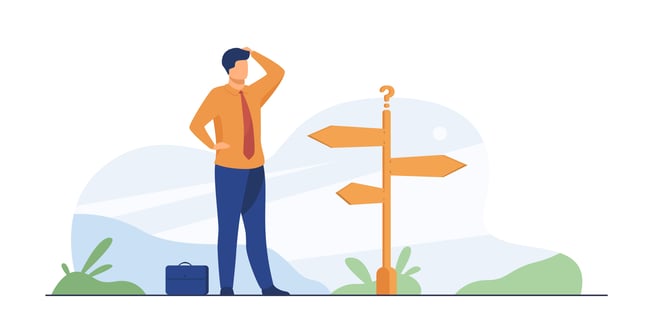In today’s technologically driven world, businesses of any nature can’t survive without IT.
Everything is about moving forward in mining operations. Mining companies can’t afford to not invest in IT because it can help them improve communications in the mine site, make collaborations easier between departments, enhance task coordination, improve staff productivity, and accelerate work with automation. These positive effects alone could improve mine site operations tenfold.
Success starts with innovative operations. The company that invests in IT can stay ahead in the mining game and continually grow using proactive technology.
Let’s have a look at how a mining company can gain a competitive advantage with the help of an IT support service provider.
Improve your IT culture

IT shouldn’t only be imposed on the technologically savvy. As your mine site takes on a new technological approach, all departments involved must also do their part in helping technology operate the way it’s supposed to. Not only to boost productivity but also to protect precious data from harm.
Security Awareness Policy
Information security is no longer just handled by IT guys. All staff and personnel are now responsible for keeping company data and assets safe. In fact, one of the most common causes of data breaches in the mining and resources industry is human error from using weak passwords to becoming phishing scam victims.
Sadly, this disaster is mainly due to the lack of awareness of cyber security and risks. Without a security awareness policy implementation, you’re pretty much welcoming cyber threats to mess with your data.
A mining company’s first defense against cyber risks is administering a security awareness policy. Even holding a monthly or quarterly security awareness seminar could save your company from disasters.
What your security awareness policy should include:
- Password Management
This habit may not come as a surprise, but people usually use the same password throughout their online accounts. On top of that, SplashData revealed that people use weak and easily guessed passwords on both their personal and business information.
So, how do you create a strong password? - Password Length & Difficulty
The more characters you add to your password, the longer it is to crack. Your password should have at least 10 characters that include uppercase and lower-case letters, numbers, and symbols.
Refrain from using words or obvious number combinations such as your birthdate, 123456, admin, and qwerty. - Use a Password Manager (just in case)
Although it’s convenient to use the same password throughout your personal and business accounts, you’re unnecessarily putting yourself at risk that can lead to even bigger problems.
If remembering a bazillion passwords is too troublesome, let a password manager do it for you. Ask your IT service provider to run them for your team, and you can automatically store, generate, and encrypt passwords without hassle. - Enable 2-Factor Authentication
If your password is compromised, the 2FA setting will save your account from being accessed by unauthorised individuals.
Although 2FA is known as “the extra code I have to enter after my password,” this minor inconvenience can save you from cyber disasters.
Have a chat with your IT service provider. They should be able to set this up for all your company-wide accounts.
Cyber Risk Awareness
Knowledge is power!
As a part of a security awareness policy, it’s critical to know what you’re up against and whom. This is so everyone in your organisation is conscious of what dangers these cyber risks bring and how they could defend themselves and the company as a whole. Here are the most common types of cyber-attacks in the mining and resources industry:
-
Phishing
Phishing is like regular fishing. But what the deceitful IT geeks are trying to accomplish is gain access to your accounts and steal confidential data.
Back in the golden days of the internet, phishing emails were so easy to spot. They sure do give us a laugh when we read those poorly written urgent emails from a prince promising a $10,000 reimbursement. Once we see these obvious signs, we chuck these emails into the trash without a second thought.
Now, they’re sneakier as ever. Phishing emails are so difficult to detect that they can even fool the technically proficient.
According to the Australian Cyber Security Centre, you must:
-
- Be suspicious of any unexpected communication.
- Be wary of emails that ask you to do a specific action (whether verifying an account or paying for something) urgently.
- Always check the address to verify if it is really from the organisation.
- Lastly, always be wary of links – hover at them first to check if it will take you to the supposed organisation’s official website or another one.
- Related article: What is Phishing and why you shouldn't take the bait
-
Malware
Malware is malicious software that infiltrates your computers and breaches your network through phishing emails. Once email attachments are opened or links are clicked, the malware freely exploits your IT vulnerabilities.
When they’ve accessed your system, they can:
-
- Encrypt your data and hold it for ransom
- Damage your network even further by adding additional malware
- Steal confidential company data
- Disrupt mining operations by making systems inoperable
-
Ransomware
Ransomware is malicious software that invades your computer when you or someone from your team clicks on a deceitful link or downloads an attachment from a phishing email.
Once the worm has its way into your computer, it will take over your data and encrypt all of your files, such as emails and corporate documents holding them hostage. This inability to access important company data can lead to a halt in mining operations, loss of client and employee information, system failures, and your hard-earned reputation.
Unless you either pay the ransom to remove the encryption or establish a reliable backup solution beforehand, then your data is pretty much good as gone.
If you’re only using Microsoft 365’s limited backup and restoration features, there’s a tiny chance that you’ll recover all of your data. But if you have a dedicated Microsoft 365 backup (ideally by a third-party application) you’ll be able to recover all your encrypted data fast and without hassle.
Related article: Ransomware: Don't let your business - or your team members - fall for this
Have a clear IT roadmap

Integrating IT initiatives into your company is never an easy task. The more challenging the industry, such as mining and resources, the harder it is to shift their operations to digital technologies. But if done right, it will increase overall company productivity, improve work quality and collaboration, and lower costs.
Here’s when the IT roadmap comes into the picture.
The IT roadmap bridges the gap between IT and business processes creating an open communication channel between executives and the IT department. A tailor-fit roadmap will maximise technology and bring the organisation to new heights with a strategic technical approach.
Mining IT roadmap benefits
IT roadmaps factor technology into the executive decision-making process. It brings in a plethora of benefits to everyone, from CEOs to team leaders.
-
A strategic approach to reaching goals
A CIO should understand the organisation’s strategy inside and out and plan those accordingly so technological changes are always proactive as organisations, especially in the mining and resource industry, usually change business landscapes a few times a year.
Most IT roadmaps are designed to achieve business objectives from five or so years down the road. But a mining IT roadmap should never be dormant. Because IT is ever-evolving, your roadmap should too. Draw up a list of organisational goals and objectives with a plan on how to achieve them. Flexibility should be your priority when optimising your technological roadmap.
Collaboration is the key to a strategic IT roadmap. Stakeholders and executives should participate in the entire process to establish clear expectations and needs with the requirements of every department. This is to clear any blurred lines and get everybody on the same boat to achieve business objectives. -
You only pay for what you need
With an IT roadmap, you have an idea of what your organisation needs. This eliminates unnecessary subscriptions to IT features that you will never need.
Saving money for IT is never the case for the mining industry. It’s more about getting a tailor-fit solution that extracts maximum value and gets the most out of your technology systems and resources. -
Technology system disruptions
A single downtime for a mining company can be costly and may lead to risking staff safety among other disasters.
A well-laid IT roadmap not only opens effective communications between teams and executives but also establishes connectivity across the mine site. You should have a well-established work-around plan in case of IT emergencies, especially if your mining site is in a remote location.
To lessen the chances of downtime, ensure that your IT service provider has 24/7 monitoring and support. By establishing a proactive monitoring and maintenance strategy, you can rectify issues before they happen.
We all want a hassle-free IT environment. But of course, issues can happen and sometimes, unexpectedly. In this case, your well-planned IT roadmap should also contain a backup plan in case incidents occur so you can get everything up and running in no time without the expensive downtime cost.
Building a Mining IT roadmap with a Virtual CIO
A company CIO should know the current state of the organisation and what it wants to be in the future. Knowing these will help you tremendously once you start laying out your organisation’s technological roadmap.
IT plays a significant role in your mining company and operations. Without a strategic plan, your technological changes might bring more bad than good. Whether your goal is to change servers or switch service providers, you’ll need to consider how the transition will change your organisation as a whole.
To do that, you will need to do the following with your virtual CIO:
-
Identify business objectives
The initial question to ask before building a mining IT roadmap is the “why.”
What is the purpose of this change in the organisation?
What benefit(s) can this bring to the company?
Having a clear view of your target objectives can make any proposed implementations easier and tailor the process towards achieving your end goal. -
Assess IT needs and objectives
Do your new objectives coincide with your current IT?
If your answer is no, you’re at a strategic disadvantage.
Why?
Because other than keeping things afloat and running in your mine site, you’re not maximising your IT enough to make current processes even better. It’s important to realise that there’s always a better way – good thing IT is all about innovation.
Every department relies on IT to stay efficient and effective, and collaborating more closely with IT will open doors of opportunities for any department to thrive. Assessing needs and objectives will pave a way for the IT team to learn more about each department’s workflow, challenges, and areas where they need help. -
Consistent roadmap reassessment
Building a mining IT roadmap is not a one-stop-go type of thing. It is an ongoing process that will constantly change periodically.
As priorities change over time, you’ll want your IT to coincide with that change as well. That’s why flexibility should also be a factor in the technology roadmap creation – it’s to ensure that there’s still progress and original goals are met.
Always have a backup for your mining organisation

Data loss is a threat not just for companies in the mining industry, but any industry that relies on IT for their everyday operations.
It can happen anytime on any device for different reasons. One way to stay ahead of the game and protect your precious data is to implement backup and restoration in your mining IT protocols.
Instead of storing your data in one place, you can have a copy of that data in another location that can be immediately retrieved. So whenever (intentional, accidental, or natural) disaster occurs and your locally stored files were destroyed, your mining operations can still run as if nothing happened.
Why you should have it?
I guess you could consider backup as insurance that would protect you from data loss and costly downtime.
Data is a mining company’s biggest asset – and it’s only critical that you keep this asset as secure as possible. If not, the functionality and profitability of your mining operations will be massively affected by data loss or any cyber risks.
Data protection is the main sauce in the backup pasta, but there are a few other reasons why you should have it.
Convenience
IT systems with automated backups take the stress of manually backing up data. This makes management and restoration of mining data seem like a walk in the park. All you need to do is decide how often you want your data backed up, and you’re set for success.
Reliability
Data corruption and hard drive failures happen to everyone, even to the most technologically savvy.
Data backup (whether cloud or offsite storage) will save your data and protect you from high downtime costs, which can be a frequent occurrence in the mining and resources industry. With a reliable backup, you can sleep well at night knowing your data is completely protected from both accidental and intentional threats.
Flexible
You call the shots as to how often you’d like to backup your mining data and how much of it you want to store. You can scale up or scale down depending on your business needs. The process is painless, quick, and proactive.
What's next?
Start gaining a competitive advantage by getting to know your IT with a complementary health check from us. We'll personally show you a plain English report of your current IT status and vulnerabilities as well as how you could mitigate your risks.













